As it came up in a couple of different circumstances, I thought I’d write a post featuring some of my Lunar renderings. The Moon was one of the first things I successfully rendered in 3d – The simple shape made the modelling easy, and just adding a colour channel texture and a bump map meant I could produce nice views of the Moon from any angle.
The current model.
The current version of my Lunar Model has 46 million polygons, and the craters and mountains are modelled using displacement mapping. In other words, the features are done with proper geometry, so the crater walls cast shadows.The colour texture map is about 1 gigapixel, so really large high resolution views are possible.
Personally I like to use exaggerated contrast, for a somewhat more dramatic look- the real moon has relatively subtle variations of grey.
Here’s a sample, showing the Mare Orientale region:
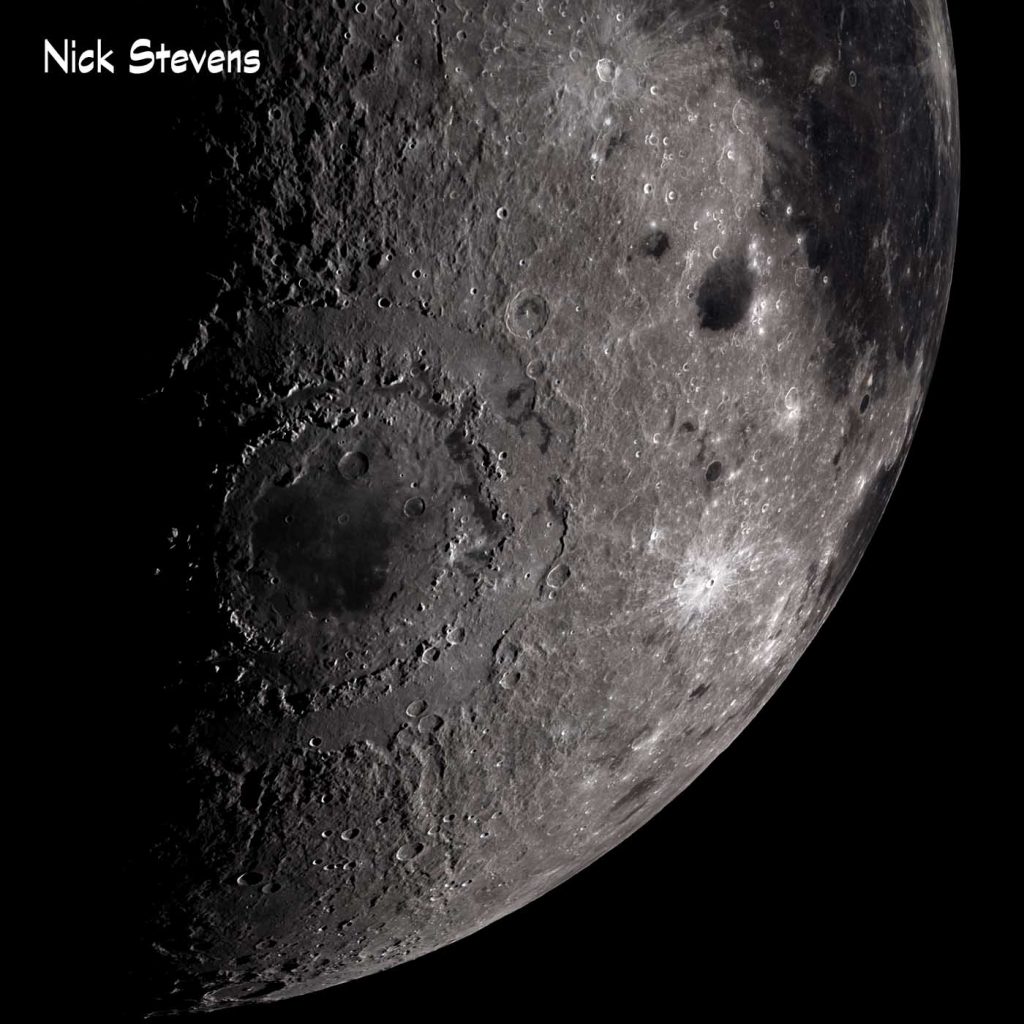
Milan Design Week
The model also works for animations. One such animation I made was licenced for Milan Design Week, for the Alessandro Design company.
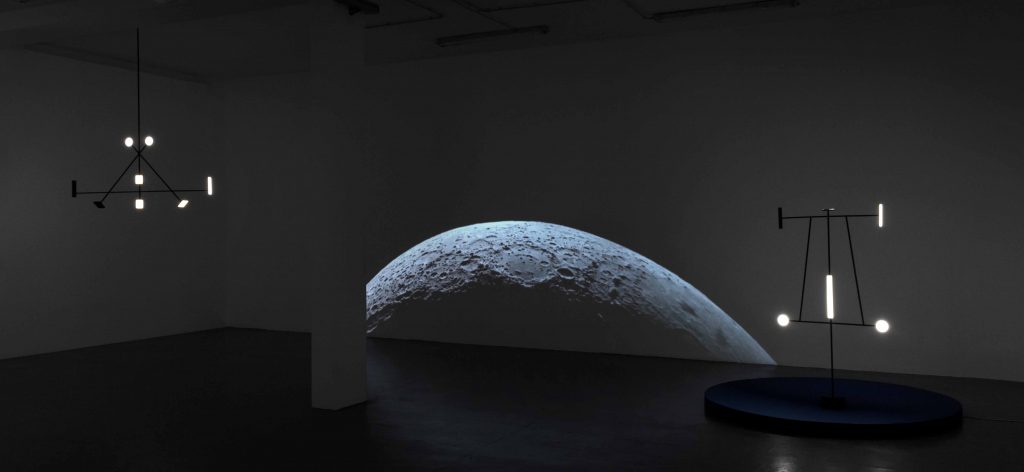
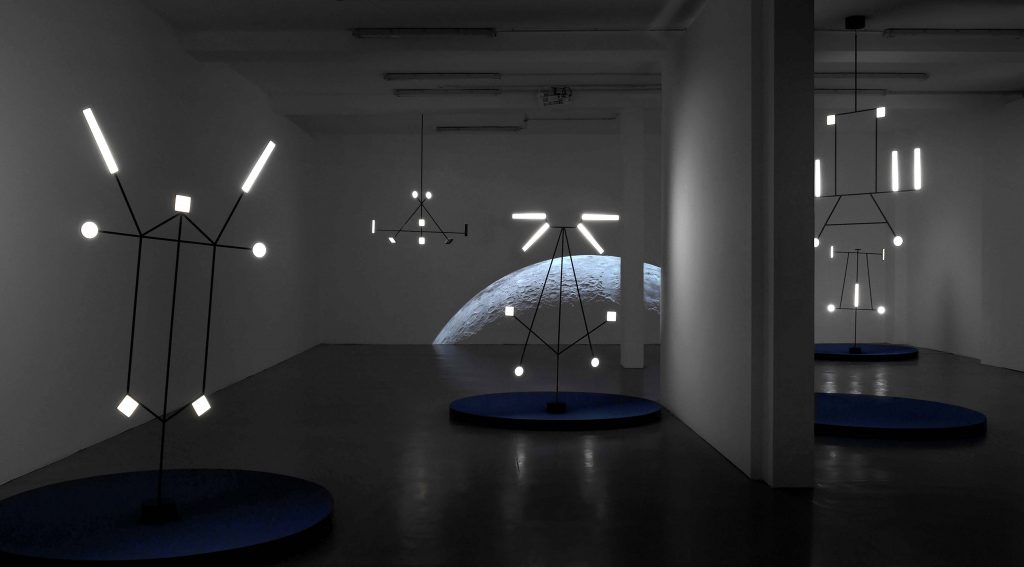
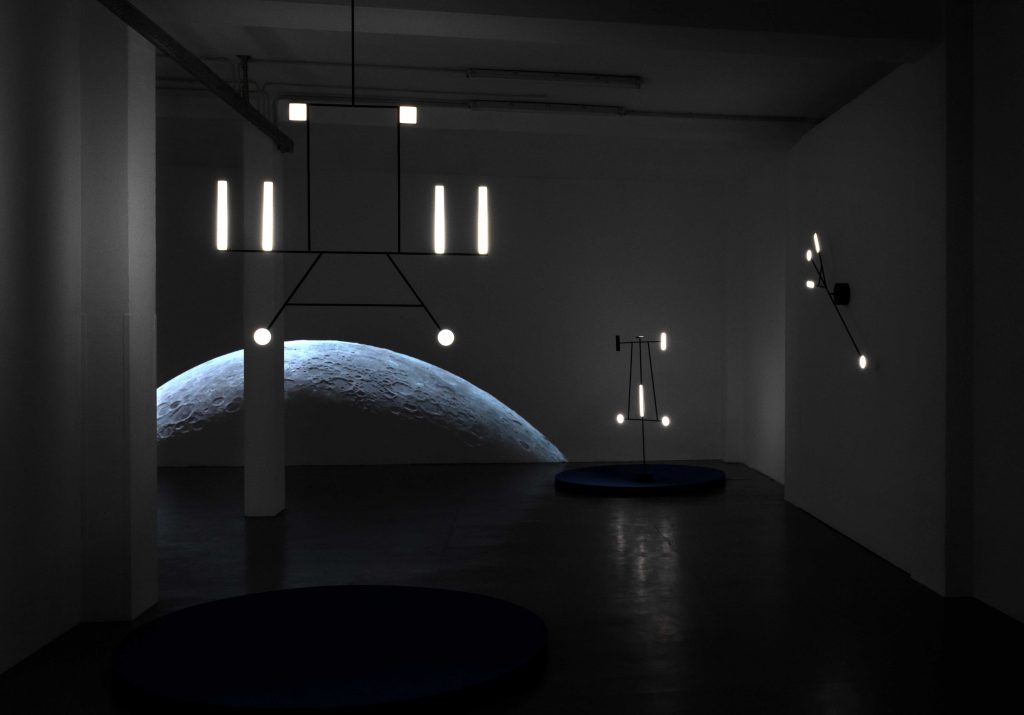
The video features a slowly rotating Moon, seen from the same angle with respect to the Sun. I was really pleased to see these photos, I think the dark environment suits the video well, and helps show off the lighting.
You can see a version of the video here, on my Vimeo channel:
Best viewed full screen! Of course, I’d be happy to produce custom graphics, still or animated, should you require them.
Compound Lunar Images
Something astronomers know well – you only see the craters near the Lunar Terminator, where light comes in at a shallow angle. So for example, it’s hard to see the craters on the full moon.

How to get around this? I rendered 2 images of the Moon, one lit from the left and one from the right, then blended the two.
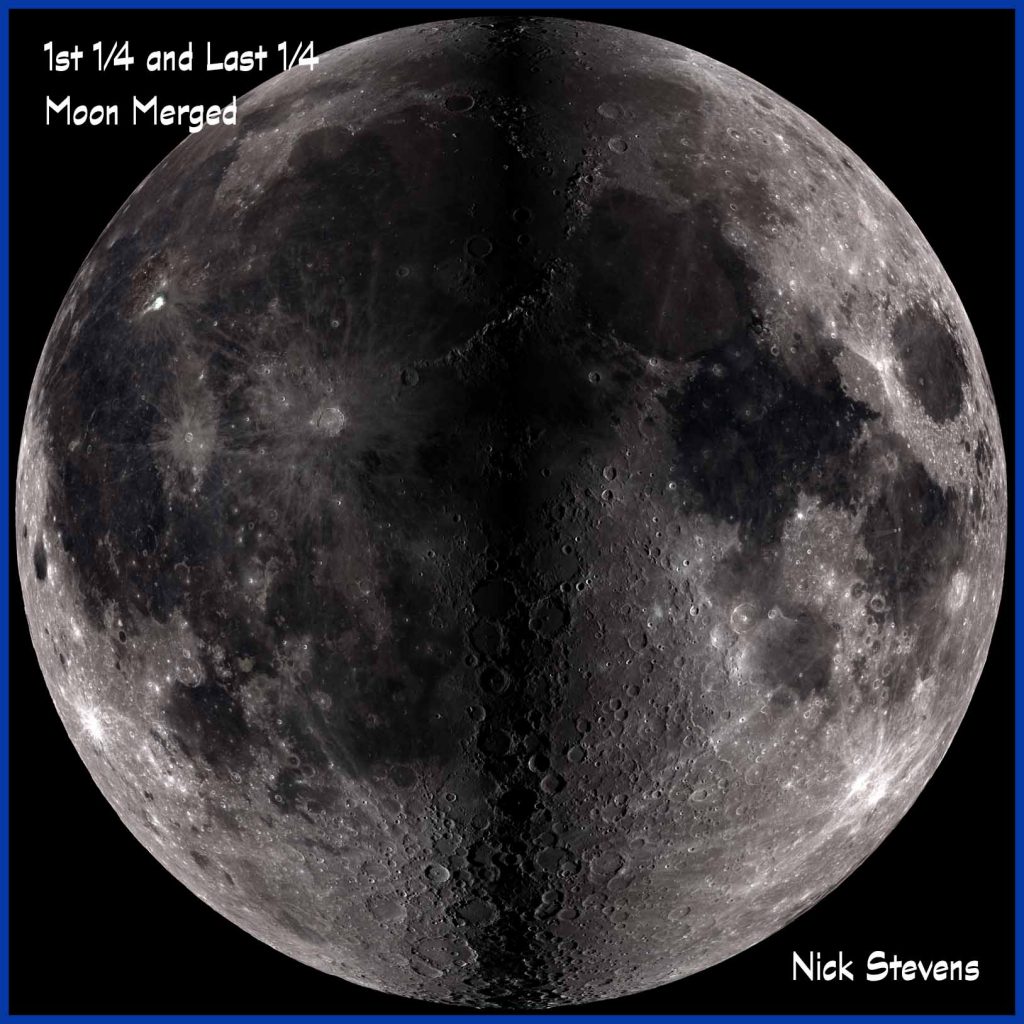
I liked the results enough to produce some more! Here’s the same trick applied to the far side of the Moon.
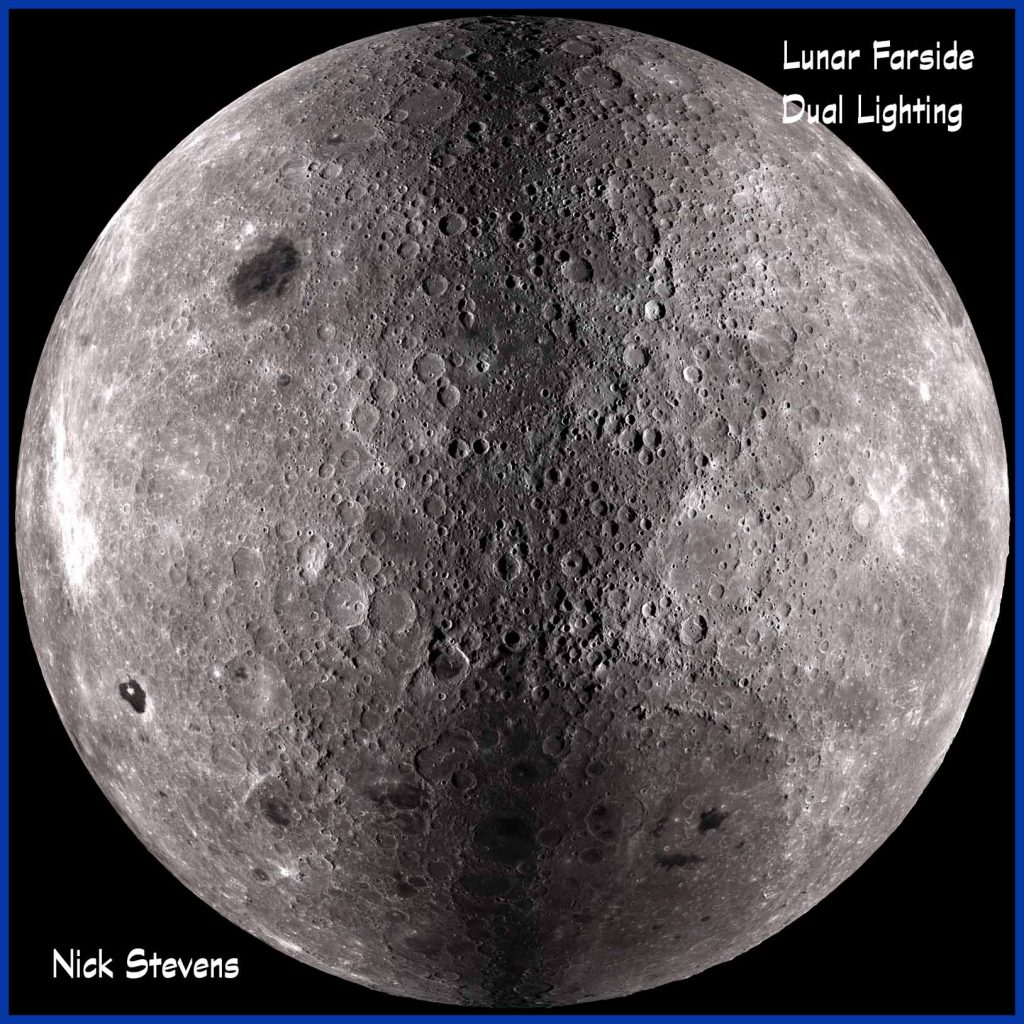
Note that the far side lacks the dark “seas” (large magma filled impact basins) of the side we normally see.
Having gone this far, I decided to then add views above the left and right sides of the Moon too.
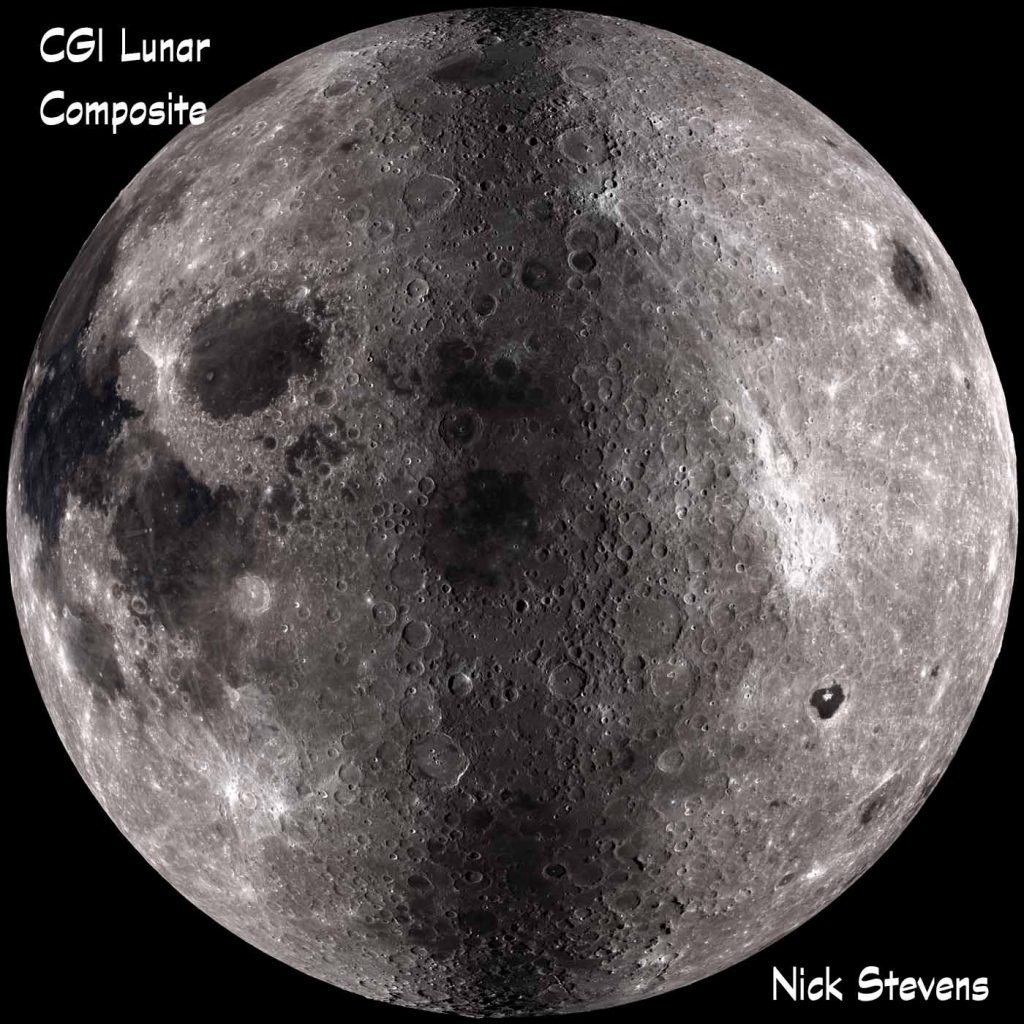
Here’s the view from above the Eastern side, that;s the side on the right as seen from the Earth’s northern hemisphere. The dark bit below and right of the centre is the dark floored crater Tsiolkovsky, named after the Russian space visionary.
And here’s the view from above the Western side, to the left as seen from the Northern hemisphere of Earth.
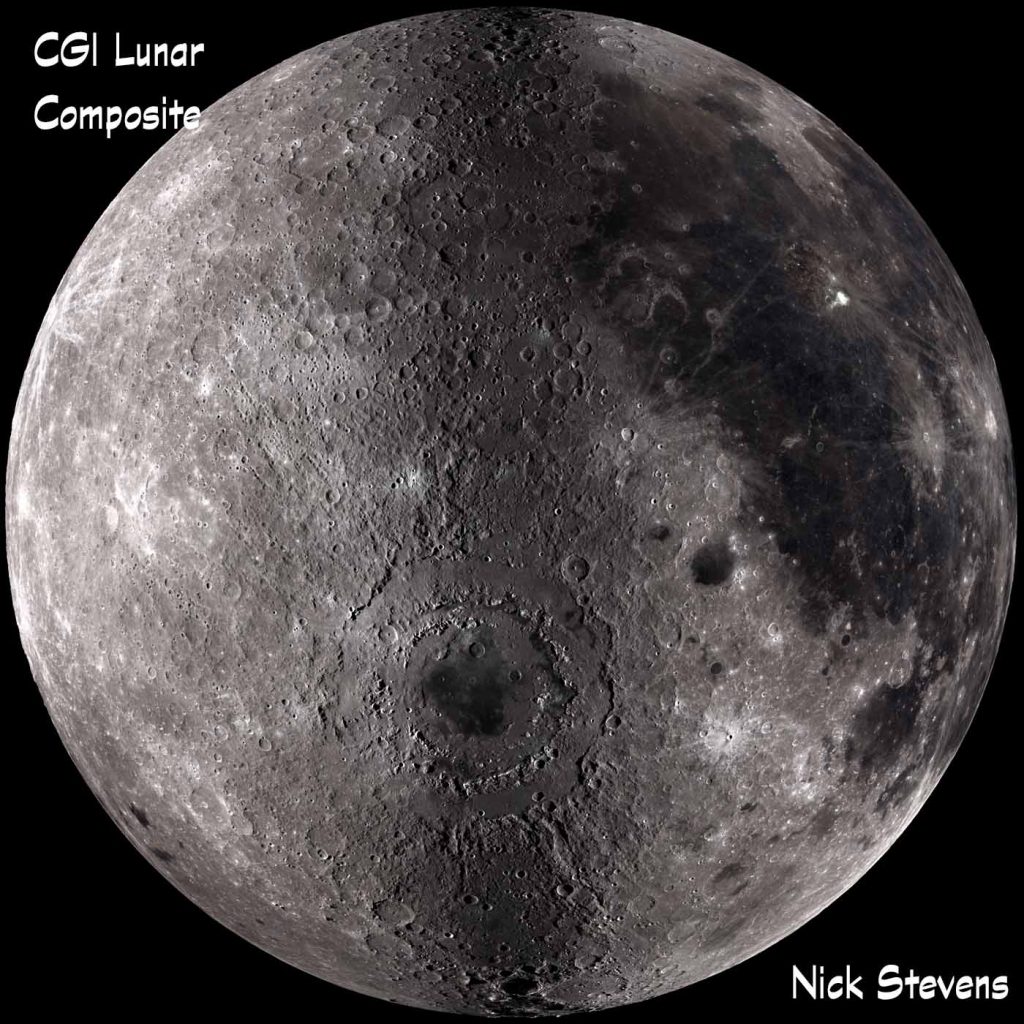
The huge ringed walled feature below centre is Mare Orientale.
One thing worth mentioning – the exact angle we view the Moon from is not quite fixed, this because while the Moon spins at a steady rate, it speeds up and slows down in it’s orbit. Here’s a short animation I made showing how the appearance of the Moon varies, from my YouTube channel.
So, any Lunar visualisations you need, get in touch and leave me a a message!

